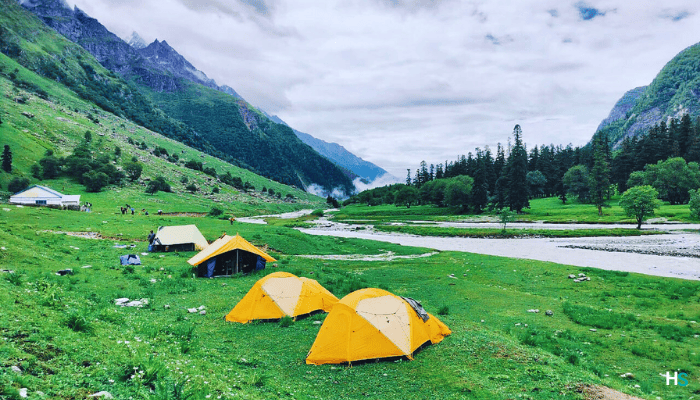
Spiti Valley Winter trek
TREK DIFFICULTY
Easy - Moderate
TREK DURATION
6 Days
HIGHEST ALTITUDE
4587 meters
GROUP SIZE
12
TREK DISTANCE
30
BASECAMP
Himachal Pradesh
BEST TIME
November to April
PICKUP POINT
Himachal Pradesh
Spiti Valley Winter trek
Spiti Valley is a beautiful and rare valley in our country. This is a high-altitude desert that becomes a snow wonderland in the winter. Spiti is a popular destination throughout the year. In the summer, the clear Himalayan views and landscape attract people. This valley is also safe to visit in the monsoon as it lies in a rain shadow location. But winter is different in Spiti Valley. Unlike fully packed in summer, winter offers a less-crowded and raw trekking experience. The winter beauty of Spiti Valley is harsh but breathtaking. Spiti valley lies between Zanskar and the Great Himalayan range. This beautiful valley is popular for its ancient monasteries, landscapes, and local culture.
In winters, Spiti receives heavy snowfall and becomes accessible only from Shimla. Spiti Valley Winter Trek is not just another snow trek but a beautifully challenging journey. You will experience a unique Spitian life in winter. You will start exploring Nako and will visit the beautiful Nako Monastery and pristine Nako Lake. Heading to Kaza, you will be standing on the administrative headquarters of Spiti. In winter, Kaza looks like heaven. Your trail leads to some traditional villages of Spiti like Hikkim, Kibber, etc. These villages are located in a very high-altitude area where the landscapes are so different. You will find majestic Himalayan ranges as a background image in every landscape. These villages are a few of the inhabitant high-altitude villages of our country. Spiti Valley Winter Trek is an odyssey to centuries-old traditions and beauty.
Spiti Valley Winter trek begins from Kaza, the heart of Spiti, where the cool air is filled with anticipation. Every step leads to a world of magic, every footprint leaves a momentary mark on the shining snow. The trails wind through quiet villages, where smoke billows from chimneys, and life slows to the rhythm of snowflakes.

The centuries-old monasteries decorated in white exude a mysterious aura. Their ancient walls seem to whisper stories of monks braving the cold of winter in search of enlightenment. Ki Monastery, situated on a hill, is a spiritual sanctuary in the clear background. Dhankar, a gem perched precariously on a cliff, commands stunning views of the frozen Spiti river below.
Nights are spent in comfortable homestays, where warm hospitality and hearty meals provide respite from the cold. The starry sky stretches to infinity, presenting a divine sight that feels almost within arm's reach.
Har Ki Dun trek | Bali Pass trek | Phulara Ridge Trek | Kedarkantha Trek | Winter Dayara Bugyal| Dayara Bugyal trek| Gaumukh Tapovan trek| Kashmir Great Lakes trek | Valley of Flowers trek| Nag Tibba Trek |Kuari Pass trek | CHOPTA CHANDRASHILA TREK | Uttarakhand Treks | Treks in Uttarakhand | Trekking companies in Dehradun
Day 1: Arrival in Shimla | Transfer to Chitkul, the Last Inhabited Village on Indo -Tibetan Bborder
Day 2: Chitkul to Nako | Spin the 500 Year Old Prayer Wheel Made of Yak Skin at Nako
Day 3: Nako to Kaza and Local Sightseeing | Walk the Artistically Painted Rooms at Key Monastery
Day 4: Sightseeing Around Kaza | Send out Postcards Stamped at the Top of the World
Day 5: Kaza to Kalpa via Dhankar | Admire the Beautiful Architecture of Dhankar Monastery
Day 6: Kalpa to Shimla and Departure to Delhi | Take Back Memories from the Enchanting Spiti Valley
Experience the beauty of Winter Spiti with us. We are offering you the best and comfortable Spiti Valley Winter Trek services. From the beautiful snow-capped mountain views to centuries-old monastery visits, we plan everything. Our team works to make your trek adventurous yet safe. We will make you experience everything in Spiti. The frozen trails will make your journey more memorable.
Winter Spiti is not just another destination but a dream. Himalaya Shelter can make your dream come true. We customize everything as per your requirements. You can find dates, itinerary, food, etc, as you need. From transport to sightseeing, we provide tailored service. Experience living in -20℃ in the heart of the Himalayas. We offer well-planned small-group guided tours all Himalayan region. Himalaya Shelter believes in eco-tourism and plans the itinerary with locals. Join the life-changing winter trek and witness the raw magic of Spiti Valley.
The word “Trek” is just a new word to winter Spiti, as it was also a route to these high-altitude areas for centuries. Spiti valley is also known as “Little Tibet” as this part has deep faith in Buddhism and has similarities in the culture. Spiti lies on the ancient route between India and Tibet. Many traders and monks used the mountain passes to travel between India and Tibet even in harsh winters. Today, the word “Trekking” sounds adventurous and thrilling among youth, but walking through Spiti was always a part for locals.
Spiti gained popularity as a travel destination in recent decades. But this valley has been serving as an education center for Buddhism. You can witness centuries-old monasteries like Tabo Monastery and Key Monastery. Even today, many monks walk between these villages in the harsh winters. The sub-zero temperature is not enough to break the courage of locals and spiritual practitioners. Nowadays, the Spiti Valley Winter Trek has become an offbeat and unique destination for snow lovers and trekkers. This trek offers beautiful landscapes and an opportunity to engage in the high-altitude remote life. For a few days, you will be cut off from the chaotic city life. Spiti is also becoming famous for snow leopard spotting expeditions. In Kibber village, you can spot this wild and beautiful animal in nature. The Spiti Valley Winter Trek is a journey to culture, heritage, peace, and beauty.
- Majestic landscapes
Winter in Spiti is something different. Trekking Spiti in the months of December to March is an unforgettable experience. The whole valley is covered with snow and looks magnificent in winter. The big Himalayan peaks, frozen lakes, and rivers are worth every penny. The ancient monasteries covered with snow fill the heart with peace.
- Snow Leopard Spotting Expedition
Winter in Spiti means good chances of spotting snow leopards. In this season, these snow leopards descend to lower altitude areas for food. The main villages for snow leopard spotting expeditions are Kibber and Chicham. Many times, the trekkers join leopard tracking expeditions with the locals. You can also witness some other wild animals like the Himalayan fox, ibex, and blue sheep.
- High-Altitude Villages
Spiti Valley is home to some of the high-altitude villages of India. You can see some of the highest inhabited villages in the world and experience the local culture. Komic is the highest motorable village in the world. Whereas, the highest post office in the world is located in Hikkim. You can send postcards with a stamp “World’s Highest Post Office-Hikkim”.
- Ancient Monasteries
Spiti holds a rich Buddhist heritage. When you enter Spiti, you will see prayer flags all around you. Walking to centuries-old monasteries is a one-of-a-kind experience. The Key monastery is always the highlight of Spiti. Meanwhile, the Dhankar Monastery is built on a cliff and gives a majestic view of Spiti and Pin Rivers.
The Spiti Valley Winter Trek is rated as Moderate in the difficulty level. This trek is suitable for experienced trekkers. Fit beginners can also do this trek only when they have really strong physical and mental strength. The difficulty level of the trek depends on the weather conditions and road conditions.
- High-Altitude Valley
Visiting high-altitude areas is difficult even in the summer, but winters can be extremely challenging. The Spiti Valley has an altitude of 3500 to 4500 m. All the popular villages like Hikkim, Kibber, Komic, Langza, etc lie above 4000 m, where the oxygen level drops about 60 percent of sea level. People often get AMS symptoms like nausea, headache, fatigue, etc. Trekkers should acclimate properly to prevent and health-issues.
- Snow-Covered Terrain
The whole Spiti valley is covered with snow in winter. Due to heavy snowfall, walking or driving becomes very difficult. The roads and trails become unstable and slippery. Walking on frozen rivers requires expertise and good navigation. Trekking in waist-deep snow can be very exhausting.
- Extremely Cold Weather
The winter in Spiti is really harsh. In the daytime, the temperature will be around -5℃ to -10℃. Meanwhile, the temperature can drop to -15℃ to -30℃ at night. The biting cold winds can make the trek more challenging. For beginners, walking or even eating can be challenging. Taking a simple bath feels impossible during the Spiti Valley Winter Trek.
The winter in Spiti starts from November. After autumn, the temperature starts decreasing rapidly. You can witness snow in Spiti from November to March. However, the experience of trekking in winter is different every month. Avoid planning the trek from November to early January if you want to see a good amount of snowfall. From mid-March to April, the snow will start melting, and you might not get the charisma of winter Spiti.
- Spiti Valley Winter Trek in Mid to End January
January is the best time to experience a winter trek in Spiti Valley. You can see fresh snow covering the valley. The weather will be cold with a silent atmosphere. You can also do snow leopard spotting expeditions. Some of the roads may close temporarily due to heavy snow.
- Spiti Valley Winter Trek in February
In February, all villages will be deeply covered with snow. The snow leopards will be more active, and you will have more chances to witness one. This can be a good time to trek Spiti Valley for experienced trekkers and wildlife photographers.
- Spiti Valley Winter Trek in Early to Mid-March
The weather conditions in March will be a bit better. The daytime will be longer with a manageable temperature. The road conditions also become better. You will still see lots of snow in the valley. Trekking in Spiti Valley in March becomes slightly comfortable in March.
The comfortable route to Spiti is the Manali-Rohtang Pass. But reaching Spiti Valley in winter is a challenge. Due to heavy snowfall, Rohtang Pass and Kunzum Pass are shut down. You can only reach Spiti Valley in winter via Shimla. This is a major, well-connected city near the Spiti valley.
- Spiti via Road
To reach Spiti, you need to reach Shimla. This hill station has good road connectivity from many cities. You can easily get direct government and private buses from Delhi, Chandigarh, and some other cities. Take an overnight bus to Shimla and then take a bus to Reckong Peo. The next day, look for a shared taxi to Kaza.
- Spiti via Train
The nearest major railway station to Shimla is the Kalka Railway Station. You can find direct trains to Kalka from many major cities. After reaching Kalka, you can take a toy train to Shimla. This is a UNESCO heritage route, and the trains have a very slow pace, but the views are majestic. From Shimla, continue your journey via road.
- Spiti via Air
The nearest airport to Spiti is Shimla, but the flights are very limited. If you can’t find a direct flight to Shimla, then check for Chandigarh airport. This city has direct flights from all major cities. After reaching Chandigarh, you can take a bus to Shimla. From Shimla, look for government buses to Rekong Peo. The buses to Rekong Peo are limited.

Mandatory Backpacking List for Aancha Top Trek
Clothing and Backpack
Get a good backpack (50 L) with a rain cover. Look for a bag that can provide you good back support. Pack 4 quick-dry t-shirts and 2 trekking pants. Get a pair of thermals (upper and lower) for night. Pack a fleece jacket or woolen sweater as a mid-layer. Get a waterproof wind breaker for sudden rain and chilly winds. For winter trekking, get a good down jacket. Now pack a woolen beanie and a balaclava. Get two pairs of gloves (woolen and waterproof). You should also pack a suncap for the daytime.
Footwear
You should look for good quality trekking shoes. Your shoes must be waterproof and provide good ankle support. Do not wear a new pair of shoes on the trek. Your feet must be familiar with the shoes. Now pack 4 pairs of trekking socks and 2 pairs of woolen socks. Pack a pair of comfortable slippers or sandals for the campsite.
Personal Care
For personal care items, start packing with your toiletries. Get a small zipper pouch and pack all the toiletries. Now look for a quick-dry towel and a toilet roll. You should also pack hand sanitizer and moisturizer. Pack a sunscreen that can protect your face from sunburn. You can also pack some snacks for the trek.
Physical Fitness Preparation for Trek:
To overcome the difficulty level of trekking, it requires strong cardiovascular endurance, muscular strength, and overall physical fitness. Incorporate these exercises into your routine to increase strength, stability, and stamina, which will help you tackle difficult terrain sections of the trail at high altitudes.
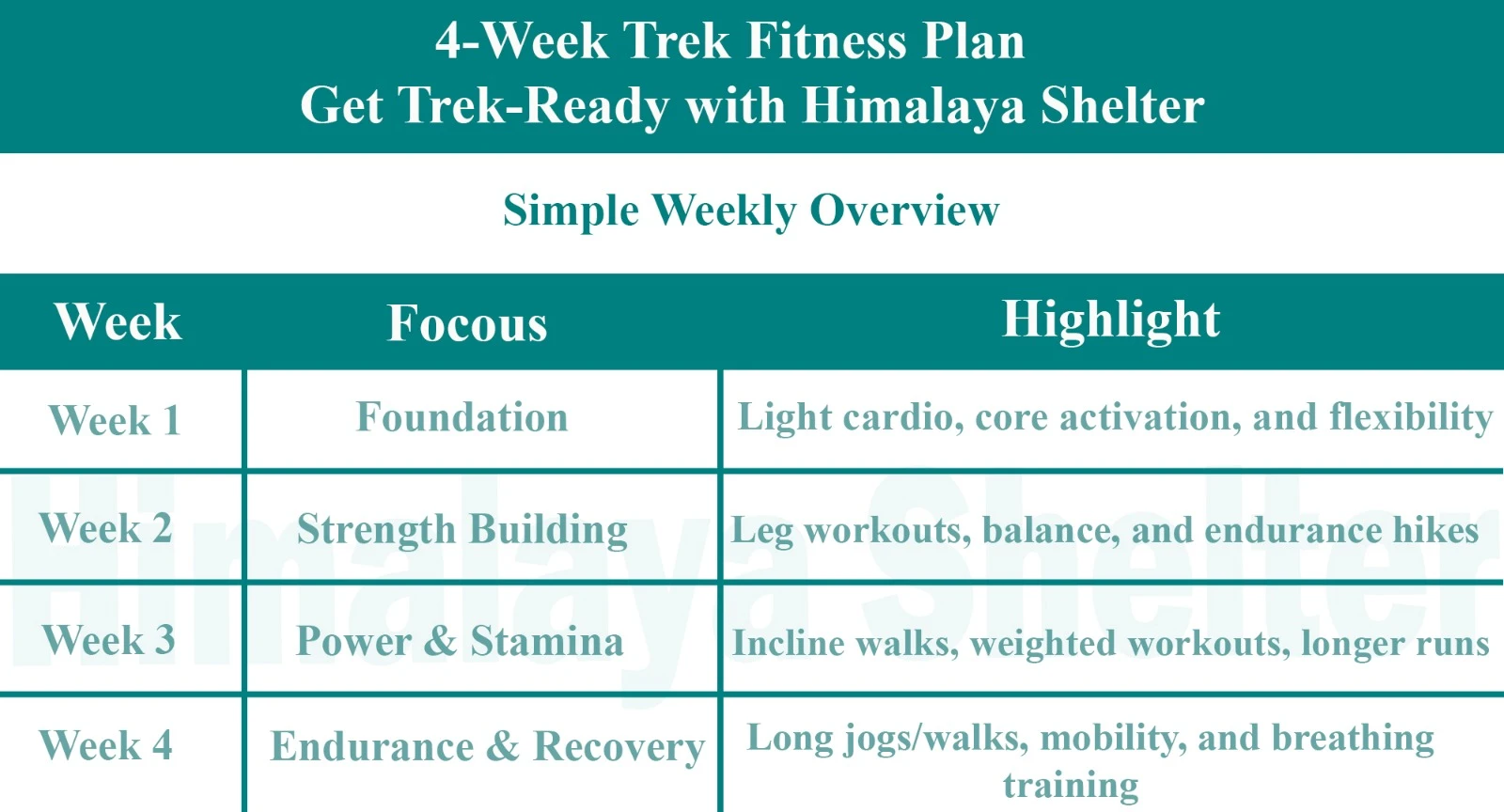
Overview
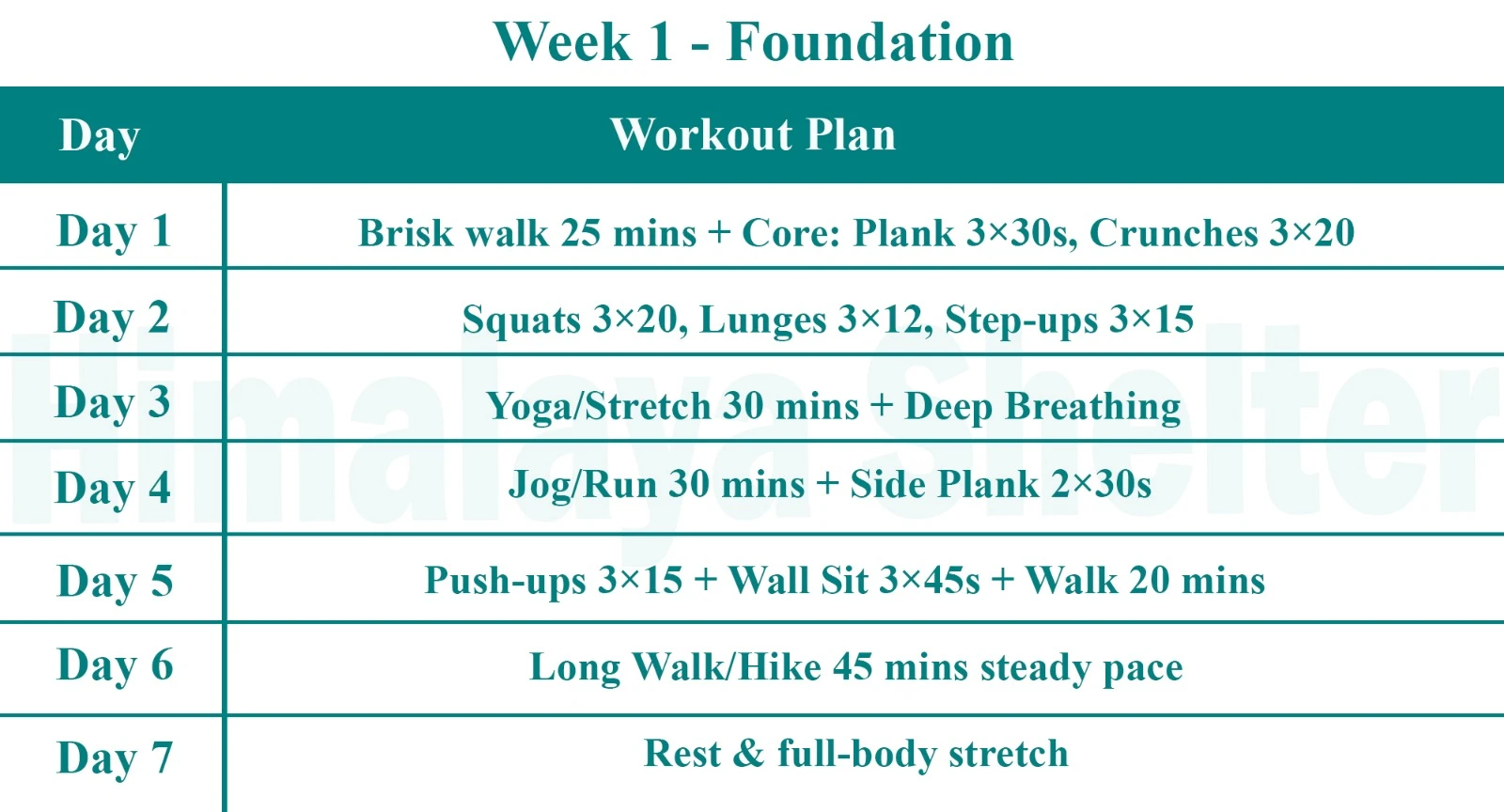
Foundation
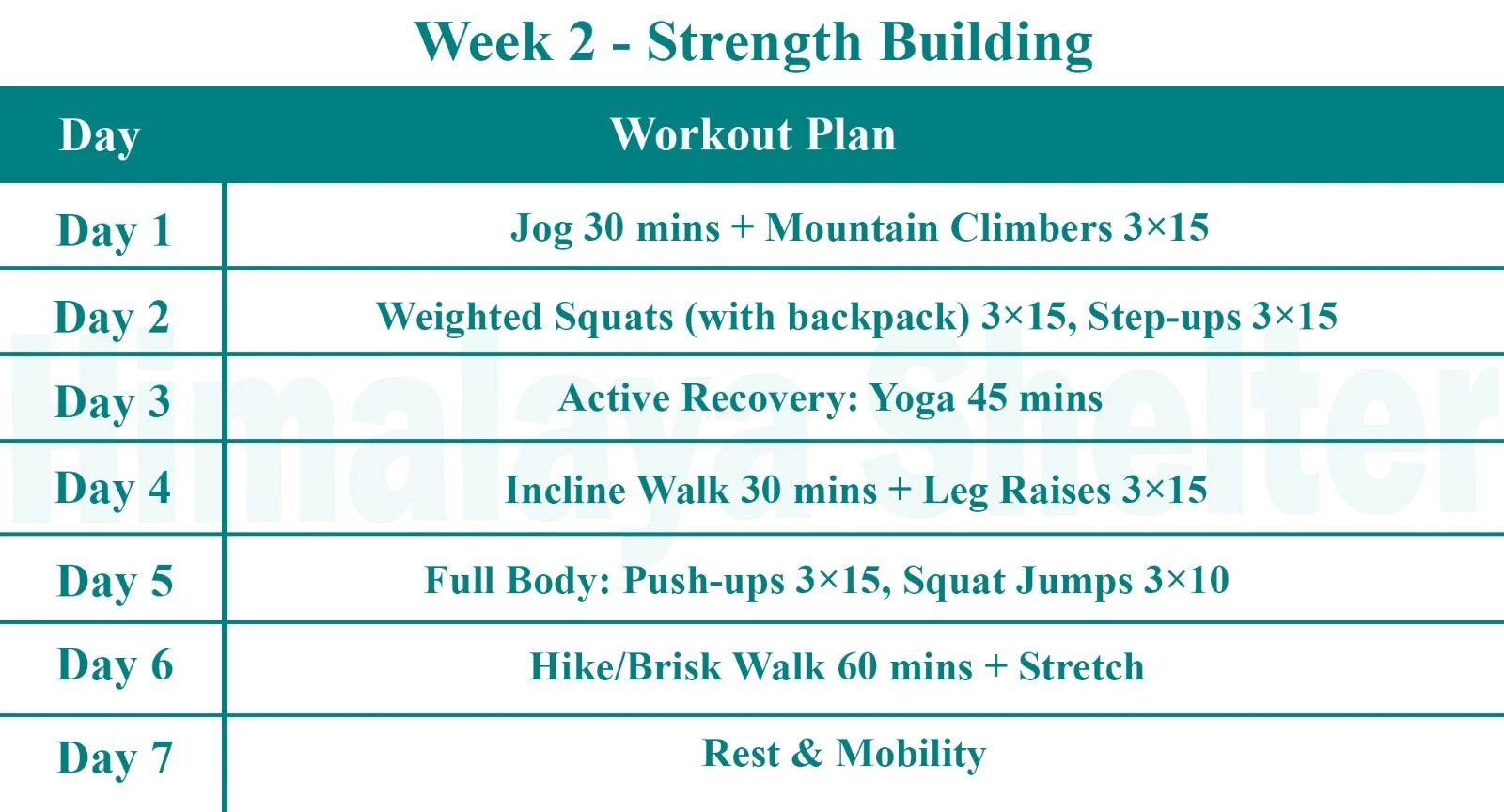
Strength Building
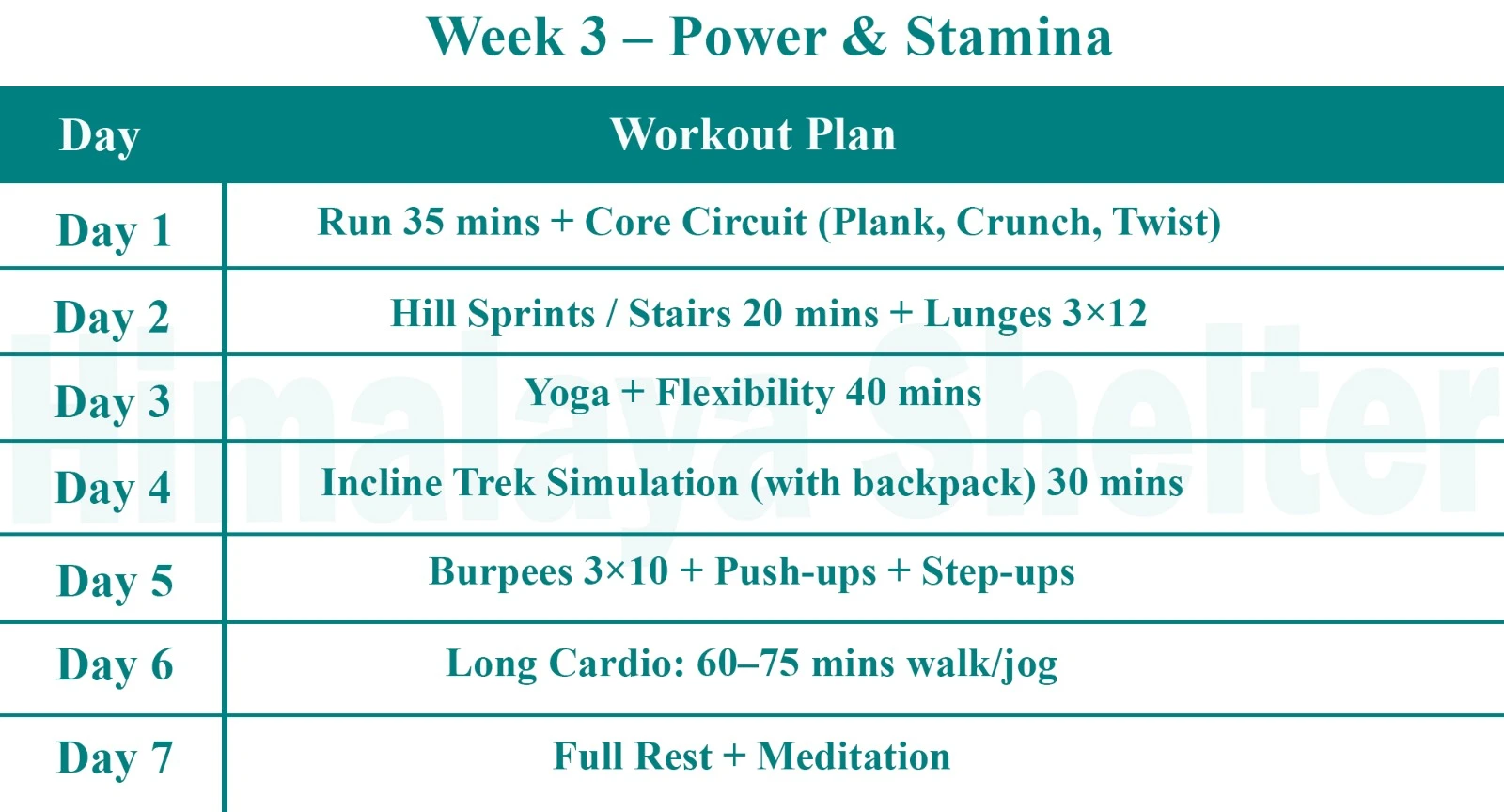
Power & Stamina
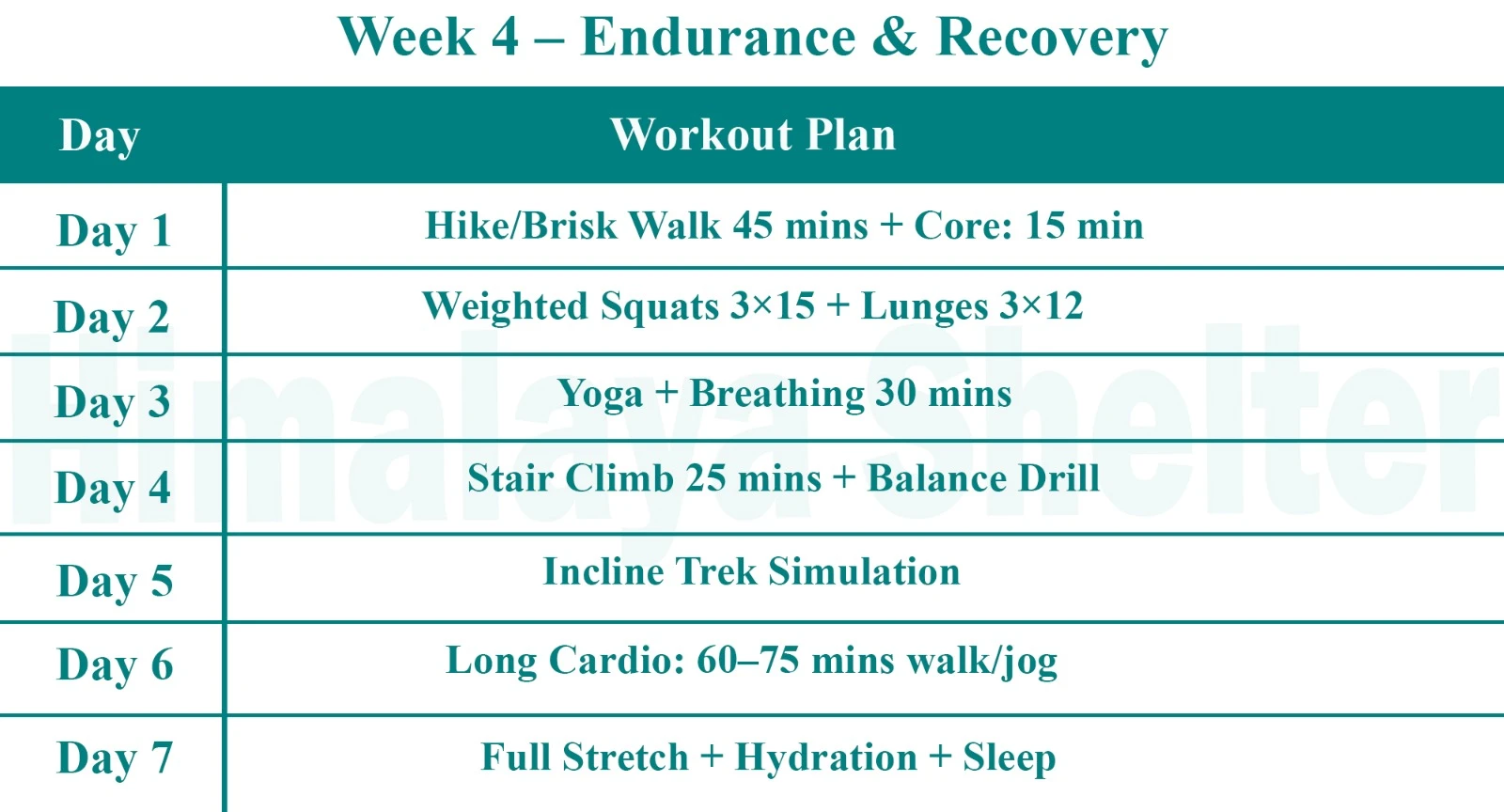
Endurance & Recovery
Day 1: Arrival in Shimla | Transfer to Chitkul, the Last Inhabited Village on Indo -Tibetan Bborder
Touchdown in Shimla, the gateway to enchanting adventures! Today, we set forth on an extraordinary journey, heading to Chitkul – the final frontier before the Indo-China border.
The road unveils a mesmerizing tapestry of landscapes, transitioning from lush forests to vast meadows, apple orchards to rugged wilderness. En route, we’ll pass through the charming towns of Sarahan and Rampur Bushahr.
Upon reaching Chitkul, don’t miss the chance to savor a meal at the legendary ‘Hindustan ka Akhri Dhaba’. Then, it’s time to settle in at our cozy hotel or homestay for a night cocooned amidst these mystical mountains
- Drive Distance – 236 km
- Drive Duration – 8 hours
Day 2: Chitkul to Nako | Spin the 500 Year Old Prayer Wheel Made of Yak Skin at Nako
From the enchanting village of Chitkul, we journey towards the mystical Nako, nestled near the Indo-China border in the Trans-Himalayan expanse.
Traversing the picturesque Kinnaur Valley, we follow the iconic Indo-Tibet Highway, witnessing the majestic union of Spiti and Satluj Rivers at the Khab Bridge.
Arriving in Nako, we embark on a local exploration with our guide. Immerse yourself in the serenity of Nako Monastery and unwind by the tranquil Nako Lake
Don’t miss a spin of the 500-year-old prayer wheel, a treasure made of precious yak skin. After a day of awe and wonder, retreat to your haven for the night, brimming with the magic of the Himalayas.
- Drive Distance – 148 km
- Drive Duration – 4 to 5 hours
Day 3: Nako to Kaza and Local Sightseeing | Walk the Artistically Painted Rooms at Key Monastery
Leaving the tranquil Nako behind, we set out for Kaza, a gem nestled in the heart of Spiti.
Enroute, a unique stop awaits – the ancient Gue Monastery, home to a 500-year-old mummy that guards its secrets. Our next destination, Tabo Monastery, often referred to as the ‘Ajanta of the Himalayas’, unveils centuries of artistic mastery.
As we journey on, the majestic Pin Valley National Park welcomes us, offering a chance encounter with the elusive Snow Leopard. Finally, we arrive in Kaza, our haven for the night, where the comfort of our hotel or homestay awaits. Tomorrow, we venture into the artistic marvel of Key Monastery.
- Drive Distance – 111 km
- Drive Duration – 3 to 4 hours
Day 4: Sightseeing Around Kaza | Send out Postcards Stamped at the Top of the World
Today, Kaza unveils its treasures, and we’re set for a day of awe and wonder Our adventure begins at Komik, Asia’s highest village, where the air is crisp and the vistas, unparalleled.
Descending to Hikkim, we delve into a unique experience at the world’s highest post office, sending out postcards stamped at the ‘Top of the World’. Then, it’s off to Langza Village, a picture-perfect haven, where the Lang Temple stands tall. Our journey continues to the iconic Key Monastery, a spiritual sanctuary amidst the Himalayas.
We then make our way to the charming Kibber Village, nestled amidst the mountains. Crossing the breathtaking Chicham Bridge, we return to Kaza, where a comfortable night’s rest awaits.
Day 5: Kaza to Kalpa via Dhankar | Admire the Beautiful Architecture of Dhankar Monastery
Leaving Kaza behind, our journey today promises even more Himalayan marvels First stop the awe-inspiring Dhankar Monastery, where ancient traditions meet stunning
As we continue, the road unfolds with breathtaking views, leading us back to the charming town of Kalpa. Enroute, we’ll pass through Reckong Peo, the heart of Kinnaur district.
Finally, we reach Kalpa, where our camp or homestay beckons with warm hospitality. The evening sky over the Kinner Kailash range is bound to leave you speechless.
- Drive Distance – 208 km
- Drive Duration – 5 to 6 hours
Day 6: Kalpa to Shimla and Departure to Delhi | Take Back Memories from the Enchanting Spiti Valley
Leaving the serene beauty of Kalpa, we embark on the journey back to Shimla, reminiscing about the enchanting moments in Spiti Valley.
The road winds through lush Deodhar forests, following the meandering Satluj River, painting a picturesque farewell to the Himalayas
. As we reach the capital city, Shimla, our adventure comes to a close.
- Transport support from and to Shimla: starting from pickup on day 1 to drop on day 6.
- Guide and cook fees.
- Rent for camping equipment.
- Forest entry charges.
- Porter and mule support to carry camping equipment. Please note that personal luggage can be carried by mules and/or porters on chargeable basis.
- All veg meals starting from day 1 dinner to day 6 breakfast.
- Possible guest house/homestay accommodation from Day 1 to Day 5.
Read More on Spiti Valley Winter trek
Photo Gallery










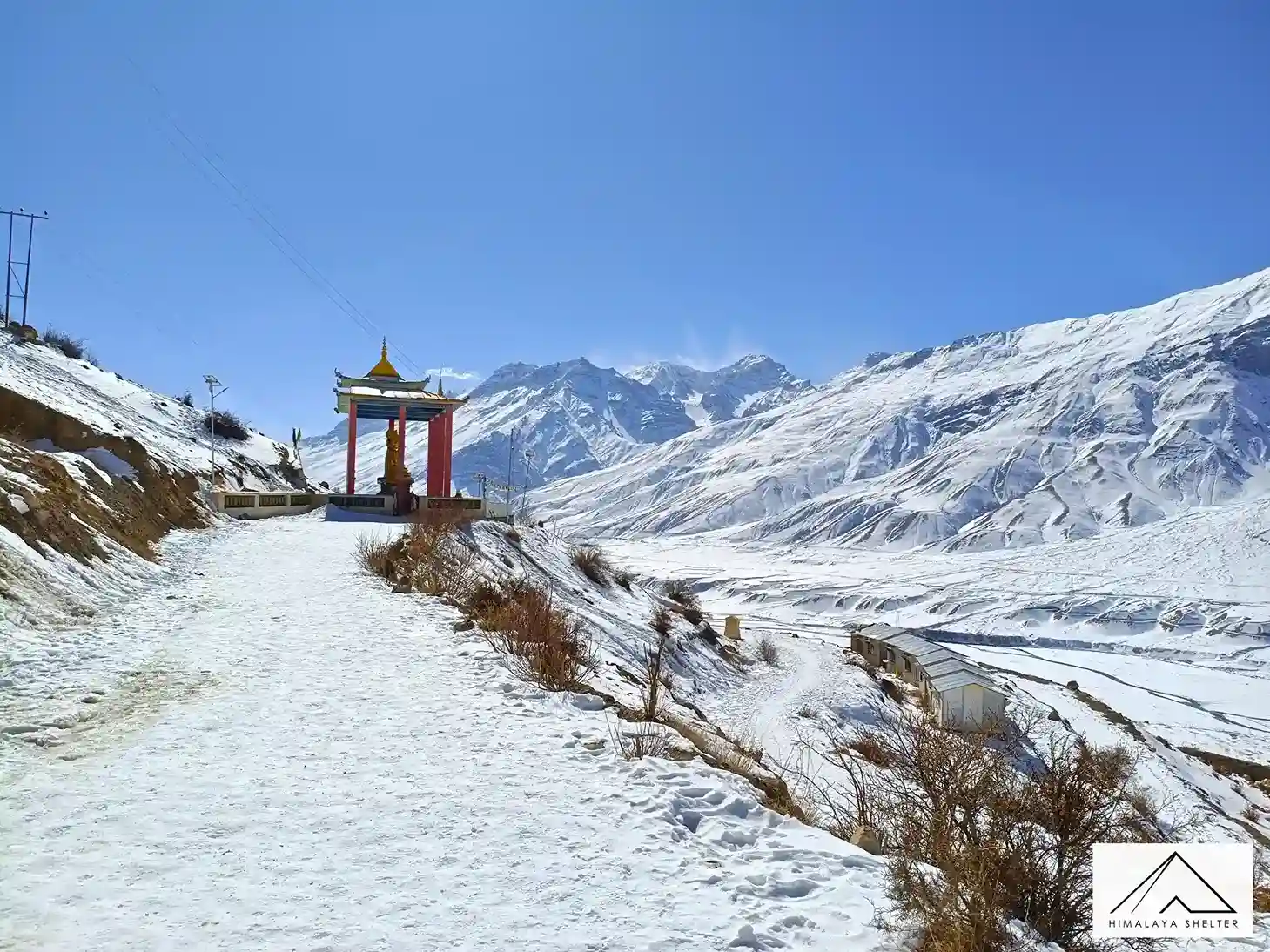
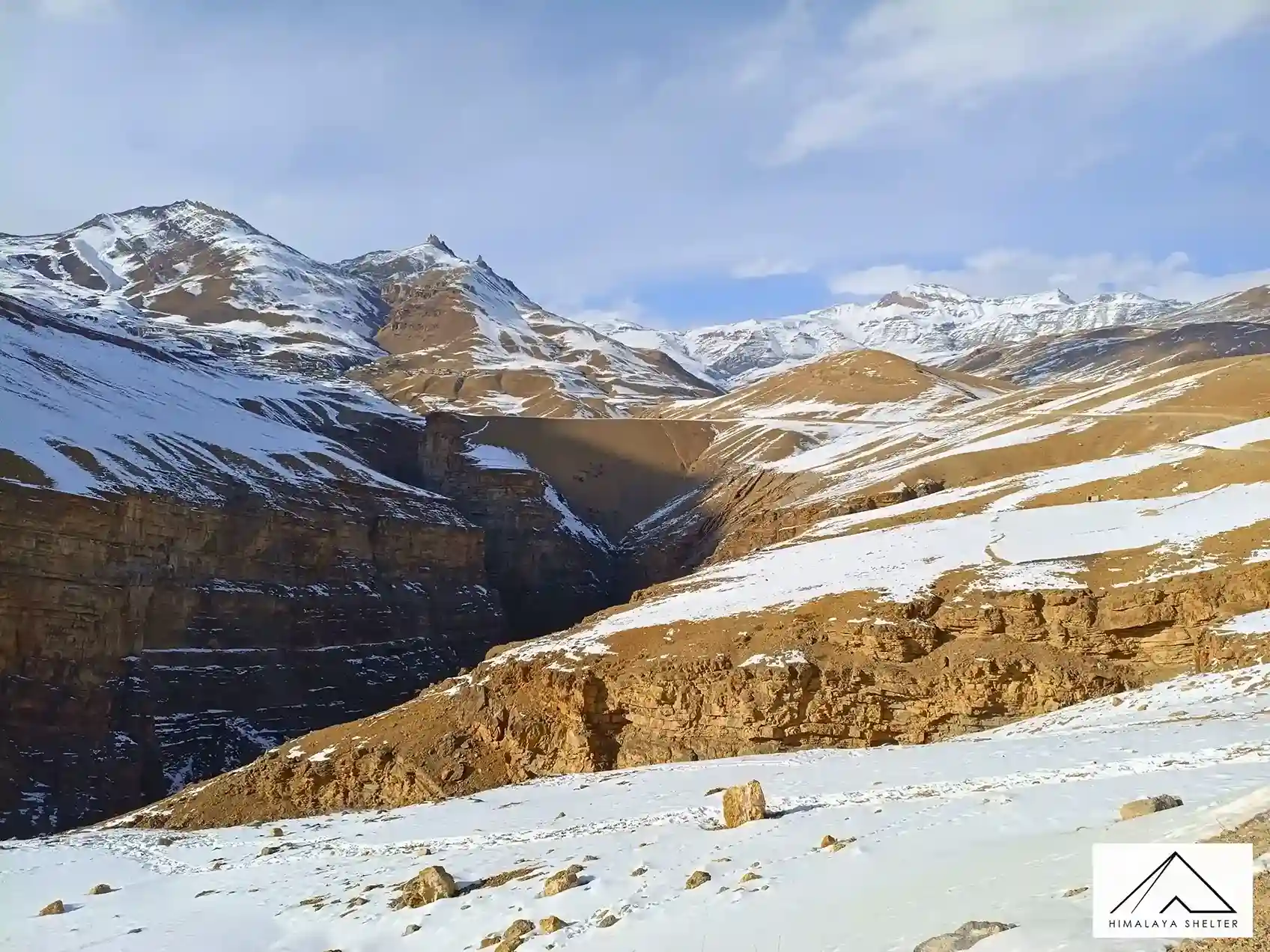
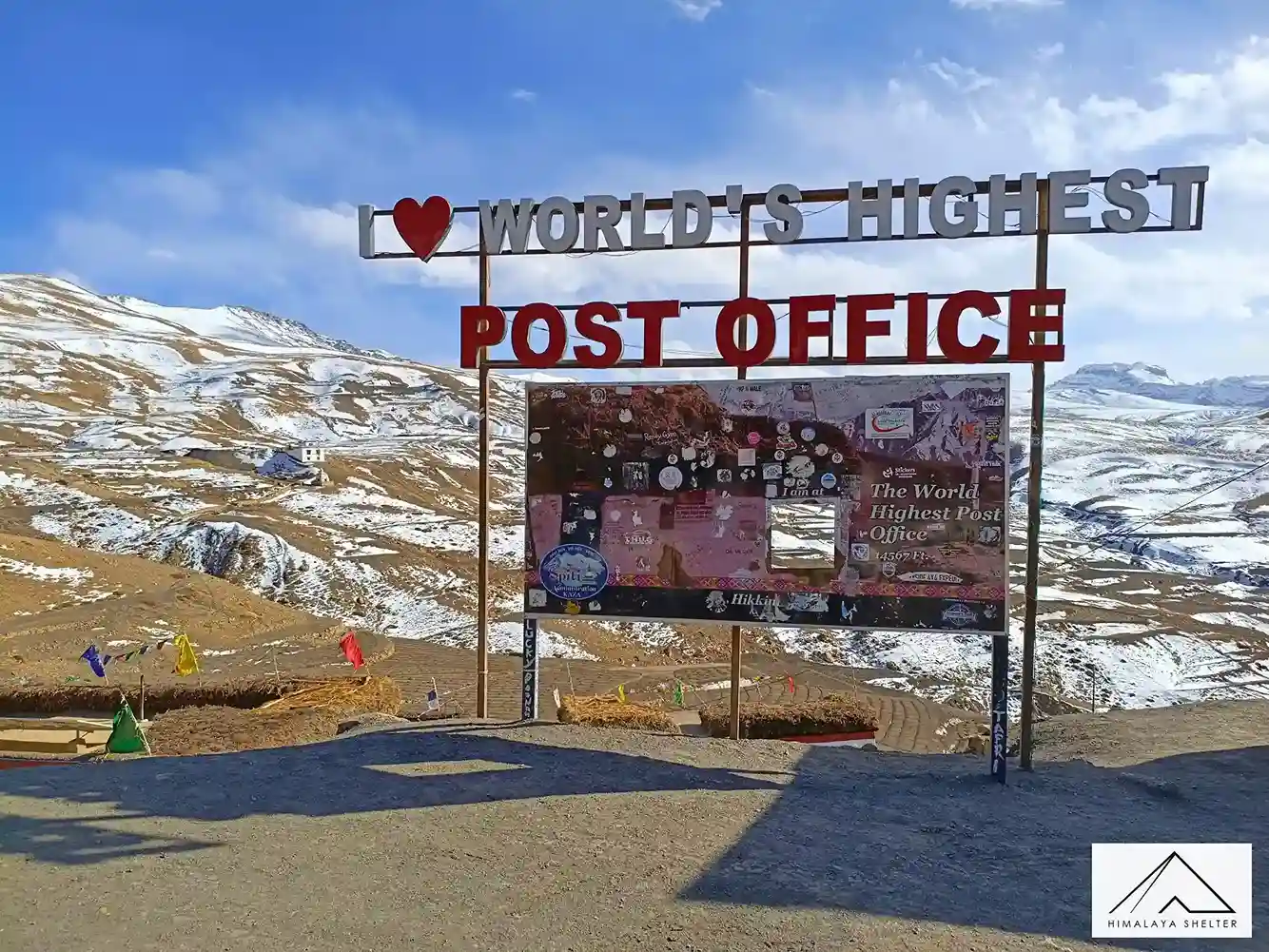
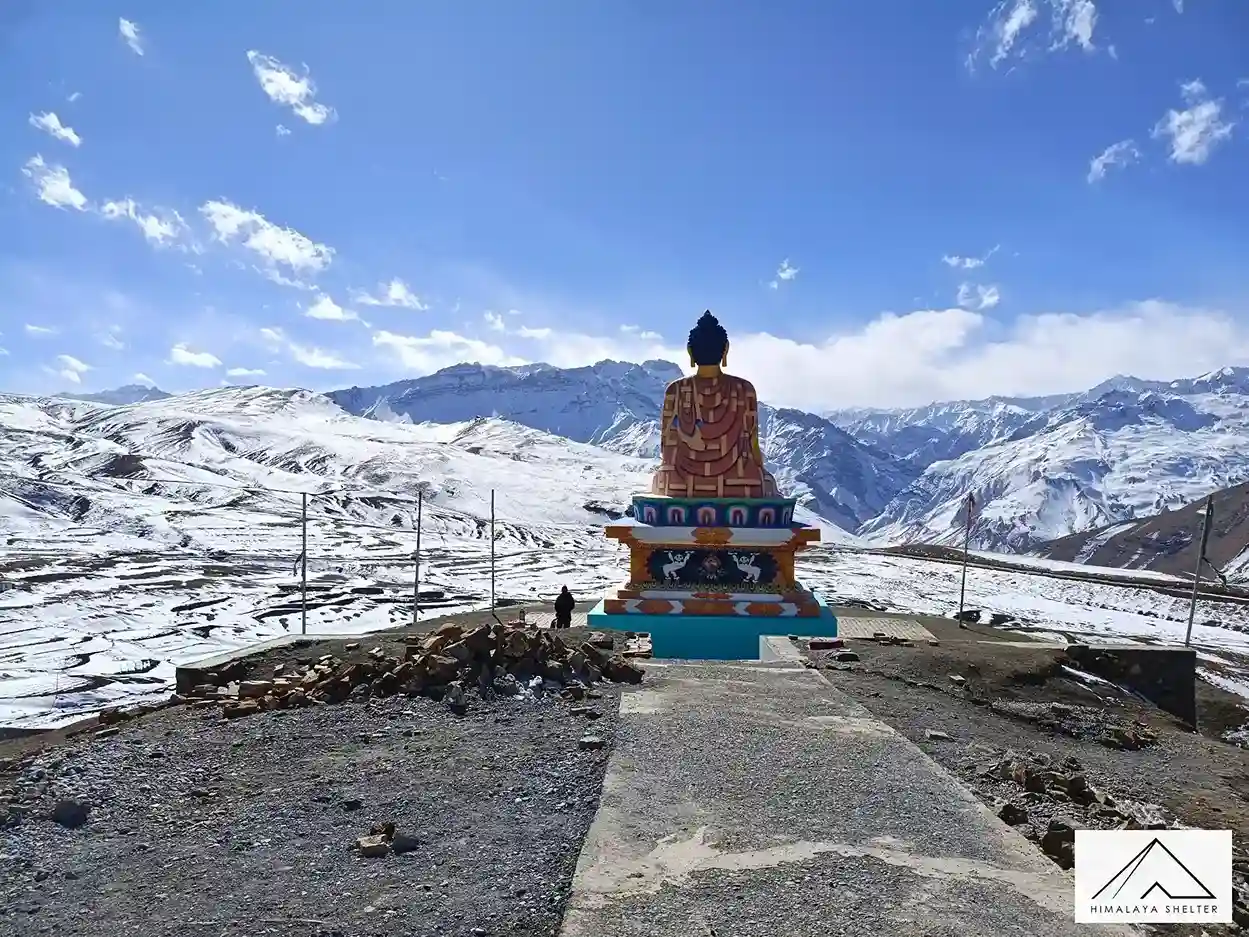
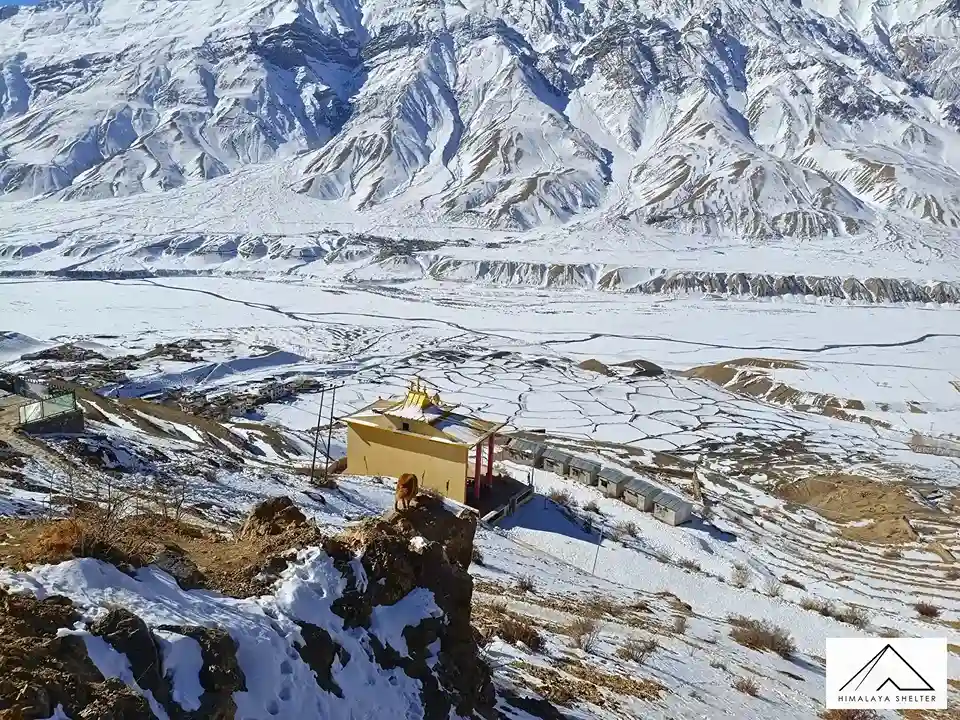
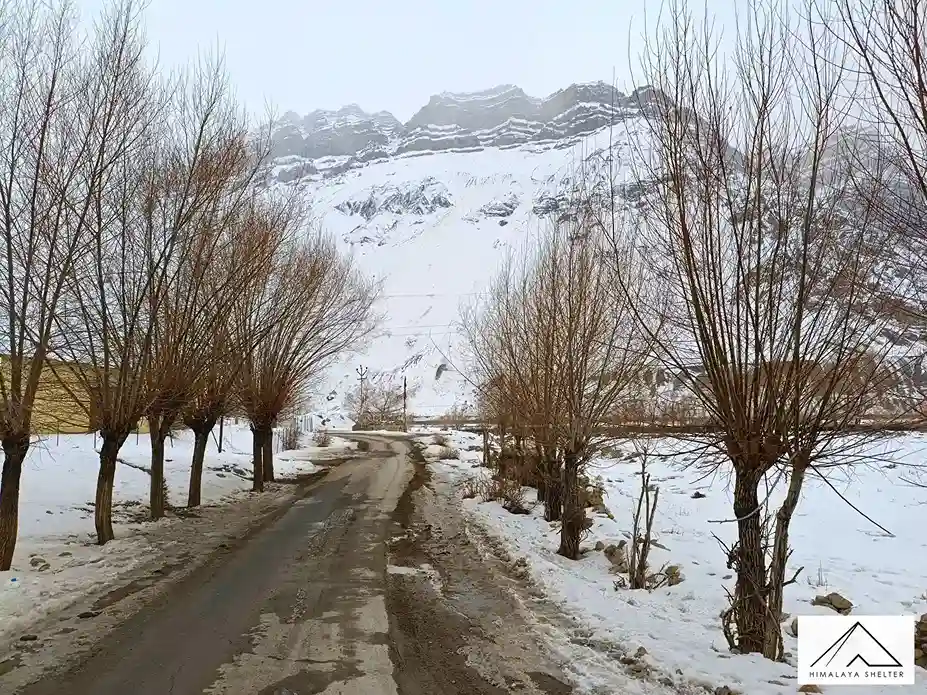
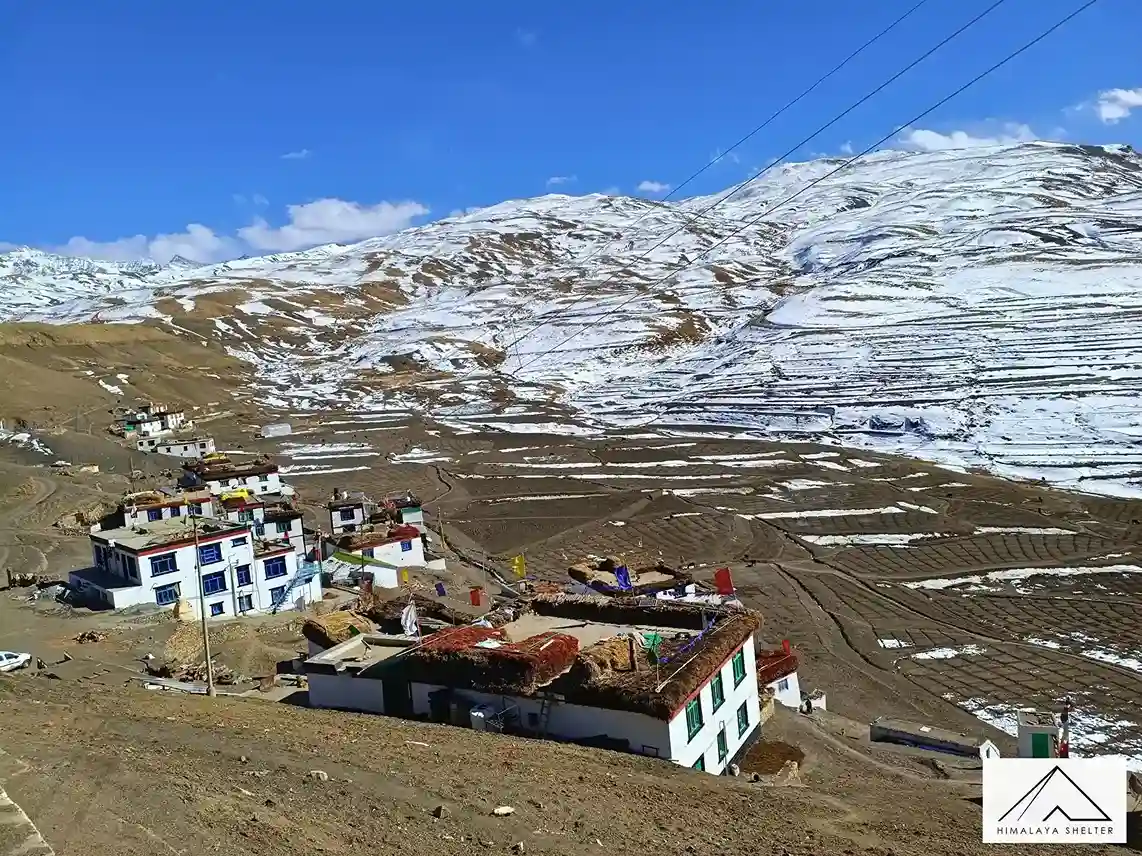
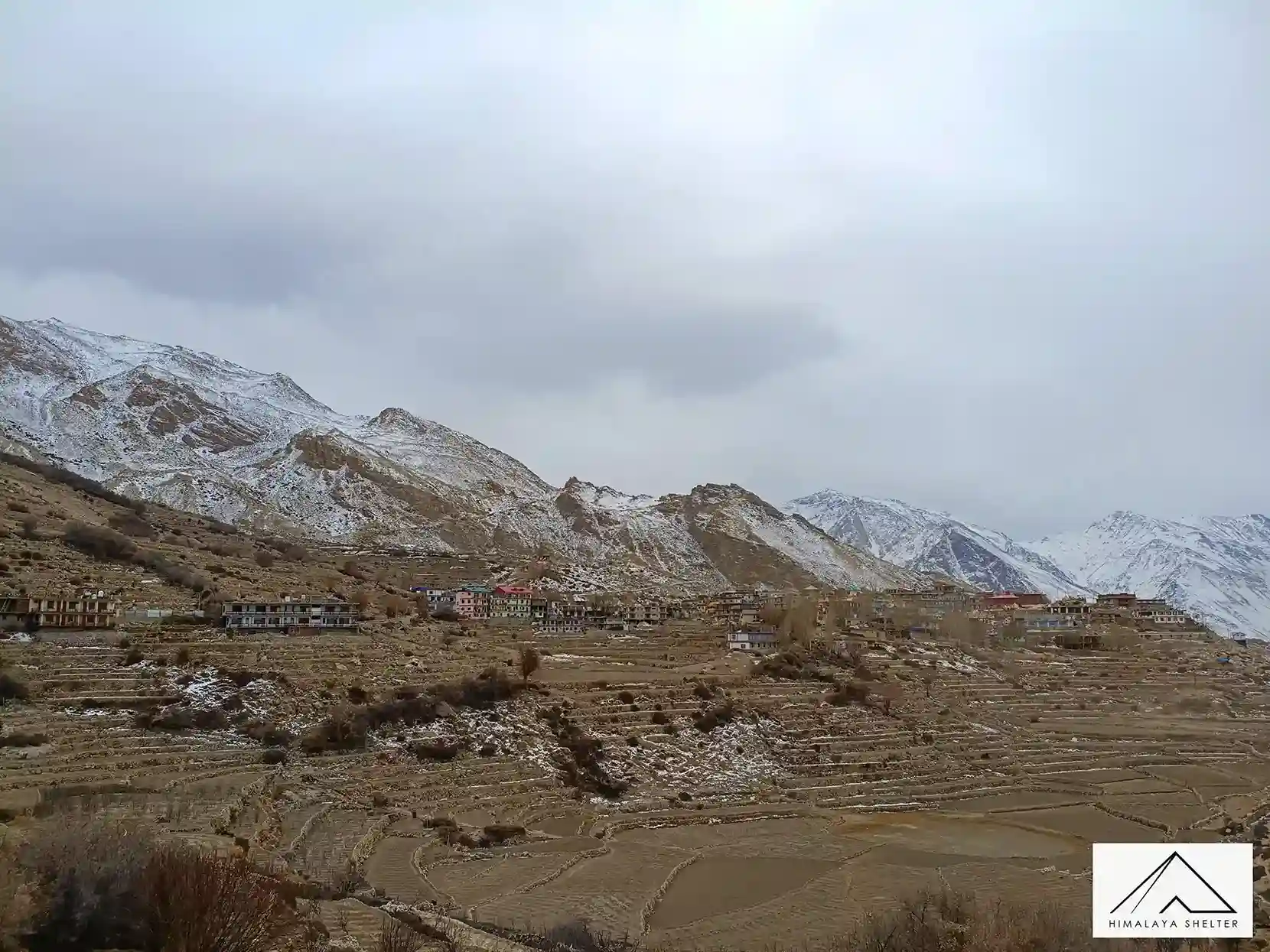
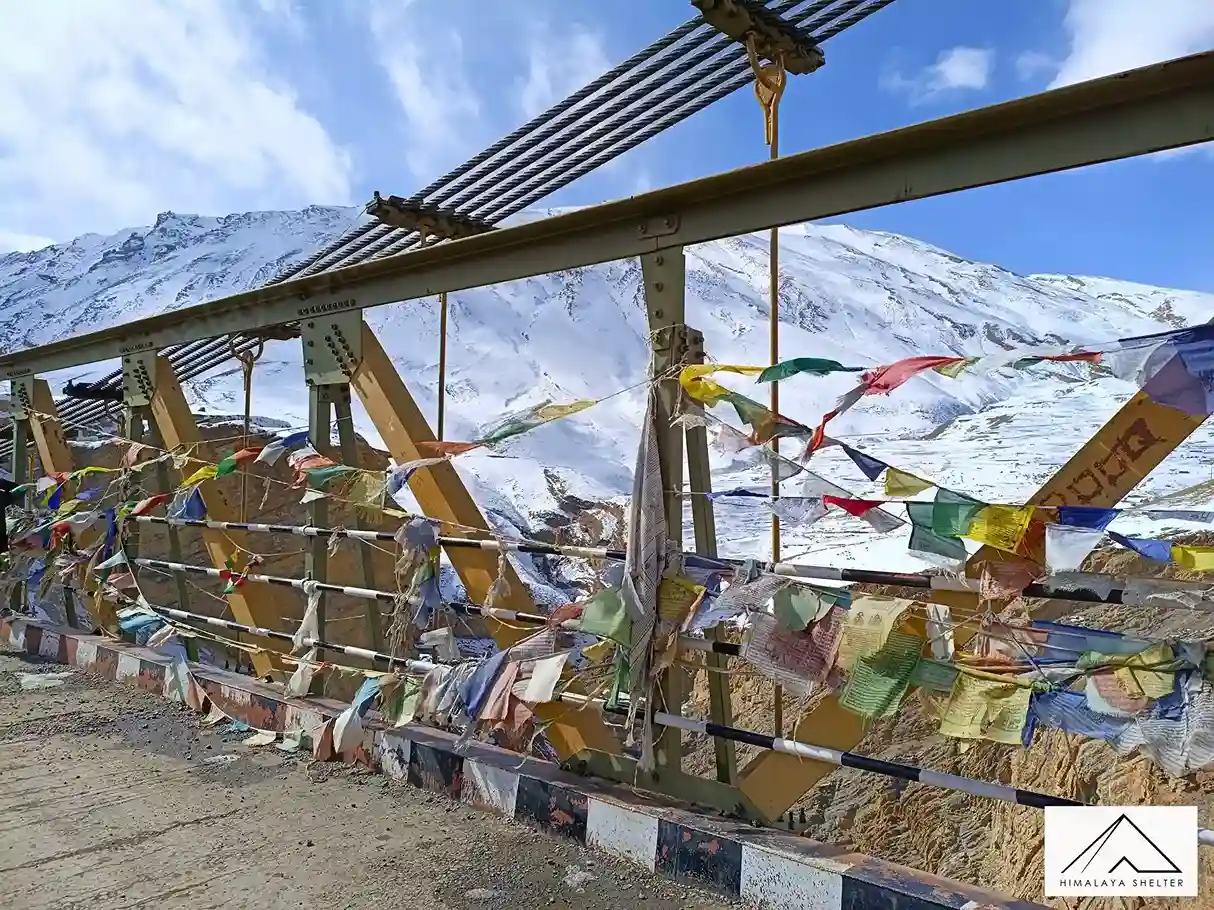
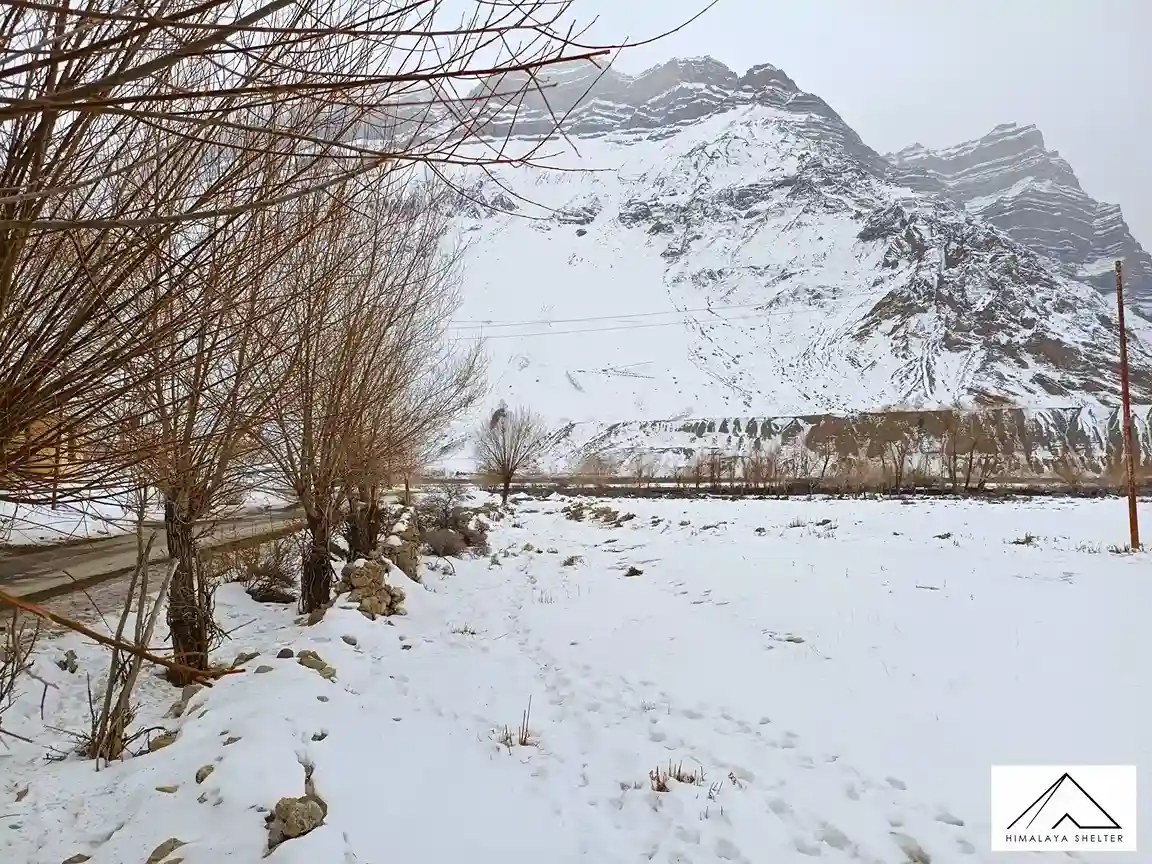
Treks by Categories
Treks By Month

Treks By Experience

